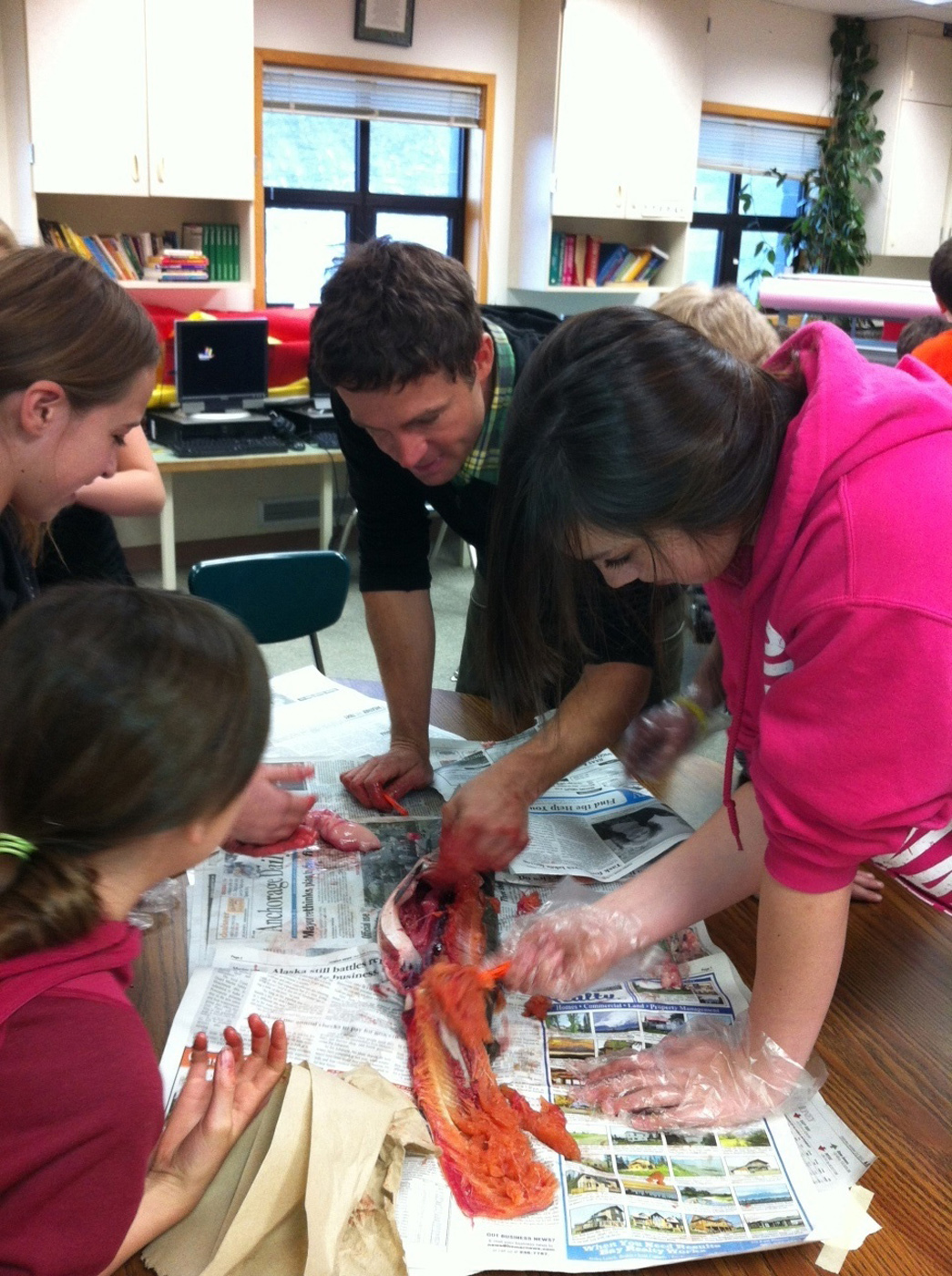When it comes to salmon, southern Kenai Peninsula students get an opportunity to set aside textbooks in favor of some hands-on learning, thanks to the Alaska Department of Fish and Game.
“Awesome,” was the one-word evaluation of the project from Fireweed Academy fifth-grader Zach Condon.
The study actually began last fall with the collection of coho salmon eggs from a Cook Inlet Aquaculture Association hatchery on a lake near Seward.
“Then, we spawn the fish in front of the kids so they get to see the process,” said fishery biologist Mike Booz at the ADF&G Homer office. “That typically happens the second week in October on a field trip to the Anchor River.”
Classroom aquariums are, of course, designed to resemble natural conditions.
“From the egg stage, we need to maintain the temperature and it needs to be dark to kind of mimic the eggs being in gravel,” said Booz. “We put blue board (insulation) around the aquarium to better insulate and keep the temperature stable and also to keep light from penetrating the eggs, which would kill them otherwise.”
There are about a dozen schools from Ninilchik south that participate in the program, each one getting from 100 to 200 eggs per set-up.
“Survival really depends on how well things went along the way, but it could be as much as 90 percent,” said Booz. “We have had complete failures, too, so we usually set up our good programs, ones with teachers that have been doing this awhile, with some extra eggs so if something does happen at a school along the way, we know we can get more and the school can continue to see the process.”
Kris Owens, fifth- and sixth-grade science teacher at Fireweed, said her students’ first activity every morning is to check the conditions of the classroom aquarium where the eggs are kept.
“They’re very aware of how many thermal units they need for each stage of development,” said Owens. “You sort of control the speed of developing and hatching by the temperature of the tank. The cooler you keep it, the slower the process.”
Over Christmas vacation, Owens will assume supervision of the aquarium.
Around mid-May, the eggs will be released at a lake, with a couple of sites available: one near Kasilof and one off the Old Sterling Highway.
On Friday, Fireweed Academy third- through sixth-grade students got a look at the inner workings of adult salmon, when Tim Blackmon, a fish and wildlife technician with ADF&G in Homer, led the dissection of coho salmon.
“They loved that, just digging in and getting their hands dirty and finding out about all the different organs,” said Owens.
While this wasn’t the first time many of her students had cleaned a salmon, Owens said it was different than preparing a freshly caught salmon for cooking.
“Usually they’re just going after the fillet and not really looking at the fish,” said Owens, whose students dissected five salmon.
“During the school year we do classroom visits so students can learn about the external and internal anatomy of salmon,” said Booz. “Generally, we talk about things like Pacific salmon identification, the work that the Division of Sport Fish does to monitor salmon and the importance to salmon of watersheds.
The fish are donated by a Kenai Peninsula processor.
“It’s a pretty nice donation,” said Booz. “It ends up taking quite a bit for our area because we need close to 100 pinks to be able to do the dissections. And Soldotna has a few more schools than we do, so they take just as many.”
McKibben Jackinsky can be reached at mckibben.jackinsky@homernews.com.


